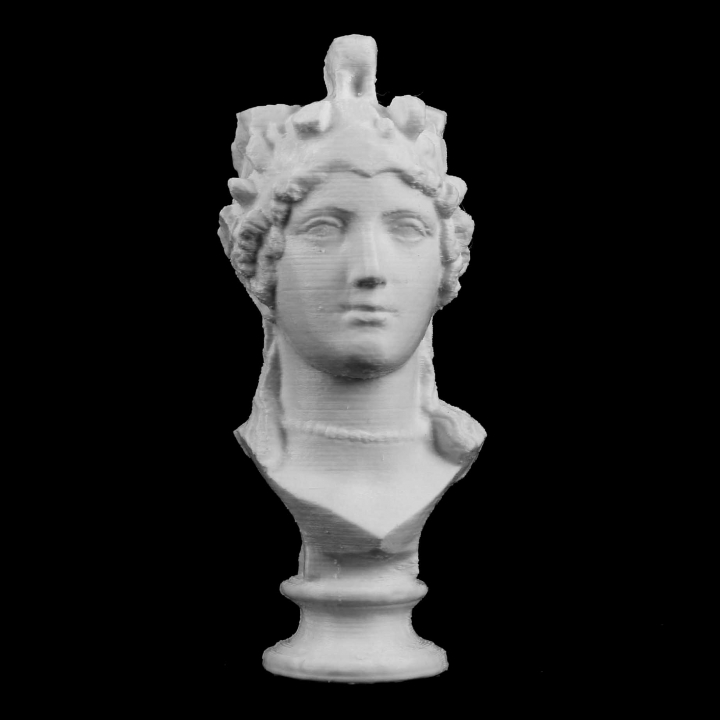
Head of The Varvakeion Athena at The Réunion des Musées Nationaux, Paris
myminifactory
Athena Parthenos, a colossal chryselephantine sculpture of the Greek goddess Athena, was crafted by Phidias and his team in ancient Athens. The massive statue, adorned with gold and ivory, housed in the iconic Parthenon, showcases the epitome of artistic excellence. Phidias began working on this masterpiece around 447 BC, and its epithet - Athena the Virgin - reflects the goddess's essential character. Over time, replicas and inspired works were created, both ancient and modern, in homage to this breathtaking sculpture. As a renowned cult image of Athens, Athena Parthenos stands as one of Phidias' greatest achievements in ancient Greece. The gold sheets were removed by Lachares in 296 BC to pay his troops, but the bronze replacements were later gilded. A devastating fire damaged the statue around 165 BC, yet it was skillfully repaired. The sculpture continued to stand tall in the Parthenon during the 5th century AD, until it was removed by the Romans. Historical accounts mention its presence in Constantinople in the 10th century. Pausanias, a renowned ancient historian, vividly described the statue: "The Athena Parthenos is crafted with ivory and gold. On her helmet, a Sphinx-like image stands, flanked by griffins in relief... She wears a tunic that reaches her feet, and on her breast, the head of Medusa is intricately carved in ivory." Athena's appearance can be assessed through images on coins, miniature sculptures, votive objects, and engraved gems. Her head is slightly inclined forward, with her left hand resting on an upright shield. Her weight is shifted to her right leg, while her peplos is cinched at the waist by a pair of serpents whose tails entwine. Locks of hair cascade onto Athena's breastplate, and her Nike - winged Victory - is held outstretched in her right hand. The exact position of her spear, often omitted, remains undetermined, but its presence is likely supported by one of the snakes in her aegis. The sculpture was built on a wooden core, covered with shaped bronze plates and removable gold sheets, except for the ivory surfaces of Athena's face and arms. Weighing 44 talents - equivalent to approximately 1,100 kilograms or 2,400 pounds - Athena Parthenos embodied a significant portion of Athens' treasury. This remarkable sculpture is part of "Scan The World," a non-profit initiative by MyMiniFactory that aims to create a digital archive of fully 3D printable sculptures, artworks, and landmarks from across the globe. If you have interesting items to contribute, email stw@myminifactory.com to find out how you can help.
With this file you will be able to print Head of The Varvakeion Athena at The Réunion des Musées Nationaux, Paris with your 3D printer. Click on the button and save the file on your computer to work, edit or customize your design. You can also find more 3D designs for printers on Head of The Varvakeion Athena at The Réunion des Musées Nationaux, Paris.
